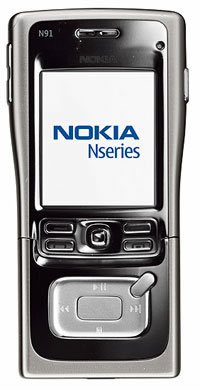 Nokia has launched three new Nseries mobile multimedia handsets, capable of taking print-quality pictures, playing MP3s, reading e-mail, browsing the Web sites and viewing mobile TV.
Nokia has launched three new Nseries mobile multimedia handsets, capable of taking print-quality pictures, playing MP3s, reading e-mail, browsing the Web sites and viewing mobile TV.
They might sound like a collection of night buses, but Nokia’s N90, N91 and N70 phones could represent a major step forward in multimedia mobile convergence.
“This next step in digital convergence brings together mobile devices, Internet content, still and video cameras, music, email and much more. Nokia Nseries devices share similar design traits as mobile phones, but they are actually powerful pocketable computers with a comprehensive set of multimedia features,” said Anssi Vanjoki, Executive Vice President, Multimedia, Nokia.
Nokia N91
The Nokia N91 multimedia handset looks to be facing up to Apple’s iPod, offering a two megapixel camera, Bluetooth and a 4-gigabyte hard disk, (capable of storing up to 3,000 CD-quality songs) inside its natty stainless steel case.
Serving up to 12.5 hours of sound via the included remote-control headset, the Nokia N91 supports a wide range of digital music formats including MP3, M4A, AAC and WMA.
Playback is made easy with dedicated music keys on the phone’s face, which slides down to reveal the phone keypad.
“The Nokia N91 delivers both a fantastic music experience and cutting-edge phone features,” purred Jonas Geust, Vice President, Music at Nokia. “What sets the Nokia N91 apart is the fact that it is always connected – you can download new music while on the move, add it to your favourite playlist and then share your playlist with friends. It’s truly the world’s best mobile connected jukebox.”
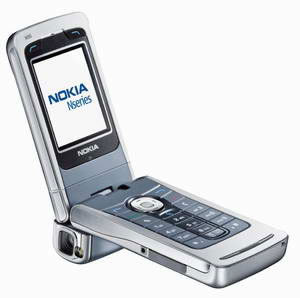 Nokia N90
Nokia N90
The N90 features a twister-tastic, rotating camera barrel which fires up the phone’s 2 megapixel camera (with Carl Zeiss lens), offering autofocus, an integrated flash and 20x digital zoom.
The tri-band phone’s main display has a 352 x 416 pixel screen (262,144 colours), with a secondary 128 x 128 pixels display on the front.
With its pioneering multi-hinge twist-and-shoot design, we have brought ease-of-use and high quality photography into mobile telephony,” enthused Juha Putkiranta, senior vice president of multimedia imaging at Nokia.
Using the main screen as a viewfinder, the N90 can capture high quality video in MP4 format, with a 8x digital zoom.
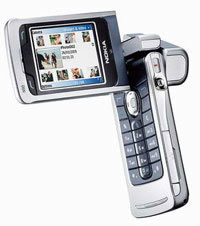 Images, videos and sound can be stored on the phone’s internal 31 MB memory or on the supplied 64 MB RS-MMC
Images, videos and sound can be stored on the phone’s internal 31 MB memory or on the supplied 64 MB RS-MMC
The 3G-enabled N90 is expected to be the first to hit the market this summer, with a suggested retail price for the N90 is €700 (~US$909 ~£474),
Nokia N70
Finally, the 3G-enabled Nokia N70 once again features a 2 megapixel camera, flash and front camera for video calling, with a FM radio, a digital music player and new 3D games.
The camera is activated by a rear sliding cover, with a range of capture scene settings available, including Scenery, Portrait, Night, and Sports.
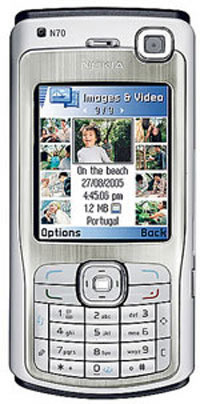 Joe Coles, Director of imaging product marketing at Nokia, stressed the consumer demand for camera-enabled mobiles: “The number one reason why people today purchase new handsets is the camera. Indeed, we foresee that by the end of 2005, over half a billion people worldwide will own a camera phone.”
Joe Coles, Director of imaging product marketing at Nokia, stressed the consumer demand for camera-enabled mobiles: “The number one reason why people today purchase new handsets is the camera. Indeed, we foresee that by the end of 2005, over half a billion people worldwide will own a camera phone.”
Measuring a diminutive 108.8 x 53 x 17.5 mm, the Nokia N70 is the smallest ever 2 megapixel 3G smartphone based on the Series 60 Platform and is expected to be available in the third quarter of 2005.
This new range of innovative phones represent further evidence of the convergence of consumer devices, with mobile phone makers keen to get a lion size bite of the action.
Nokia already claims to the biggest camera vendor in the world, and anticipates that these new phones will help secure its position as the largest seller of portable MP3 players later this year.
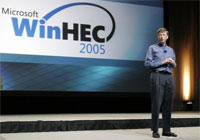 After several years of delays, Microsoft has assured computer-makers that Longhorn, the next version of Windows, is on track for release by the end of next year.
After several years of delays, Microsoft has assured computer-makers that Longhorn, the next version of Windows, is on track for release by the end of next year. This would offer a built-in method to let users view and print graphical documents, without the need to install the application that created the original file – in other words, a rival to Adobe Systems’ popular PDF technology and PostScript page description language.
This would offer a built-in method to let users view and print graphical documents, without the need to install the application that created the original file – in other words, a rival to Adobe Systems’ popular PDF technology and PostScript page description language.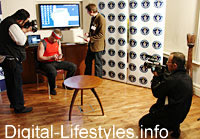 Digital-Lifestyles were on hand to witness a new world record being created, as former World Text Champion Arttu Harkki used a Treo 650 smartphone to type the fastest-ever email on the move using a QWERTY keyboard – using a single thumb.
Digital-Lifestyles were on hand to witness a new world record being created, as former World Text Champion Arttu Harkki used a Treo 650 smartphone to type the fastest-ever email on the move using a QWERTY keyboard – using a single thumb. Before the record attempt could start, Hein Le Roux, official adjudicator from Guinness World Records explained the rules, “There are a lot of phones that incorporate QWERTY keyboards, and we need to make sure that the record is standard across all models. For this reason, we asked Arttu Harkki to type using just the thumb of one hand.”
Before the record attempt could start, Hein Le Roux, official adjudicator from Guinness World Records explained the rules, “There are a lot of phones that incorporate QWERTY keyboards, and we need to make sure that the record is standard across all models. For this reason, we asked Arttu Harkki to type using just the thumb of one hand.” As the stopwatch-toting Le Roux looked keenly on, Harkki’s mighty uni-thumb went supernova as he bashed out the following message:
As the stopwatch-toting Le Roux looked keenly on, Harkki’s mighty uni-thumb went supernova as he bashed out the following message: Once I’d recovered from the high octane excitement of watching someone write a text message repeatedly, I asked Le Roux what the previous record had been, and was surprised to find that there hadn’t been one, because this was a new category.
Once I’d recovered from the high octane excitement of watching someone write a text message repeatedly, I asked Le Roux what the previous record had been, and was surprised to find that there hadn’t been one, because this was a new category.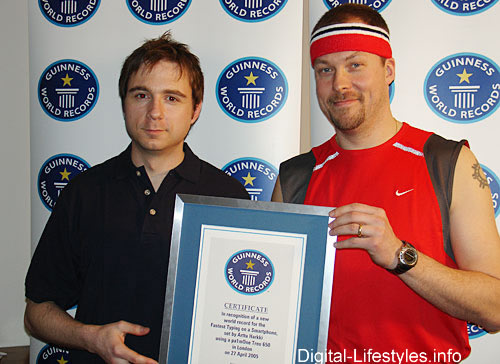
 Samsung announces a prototype hard disk drive that includes flash memory, promising longer battery life and less hard disk woes for laptop users.
Samsung announces a prototype hard disk drive that includes flash memory, promising longer battery life and less hard disk woes for laptop users.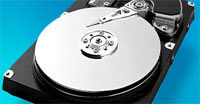 The hard disk would only spin up when the flash memory’s “write buffer” was full, reducing the time and power needed to keep the drive’s rotating media spinning.
The hard disk would only spin up when the flash memory’s “write buffer” was full, reducing the time and power needed to keep the drive’s rotating media spinning.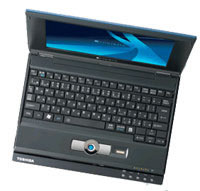 As part of Toshiba’s 20th anniversary celebration of the first laptop computer, the company has brought back its libretto line of ultraportables, starting with the miniscule U100.
As part of Toshiba’s 20th anniversary celebration of the first laptop computer, the company has brought back its libretto line of ultraportables, starting with the miniscule U100.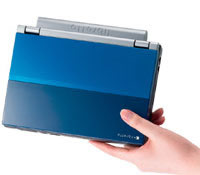 For maximum security, the pint-sized palmtop wedges in a biometric, integrated fingerprint reader with the 60 GB hard drive being protected by Toshiba’s ‘EasyGuard’ technology.
For maximum security, the pint-sized palmtop wedges in a biometric, integrated fingerprint reader with the 60 GB hard drive being protected by Toshiba’s ‘EasyGuard’ technology.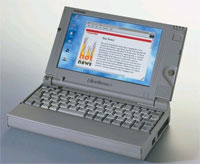 Measuring in at a humble 8.3 x 6.5 x 1.2 inches, the libretto U100 retails for US$1,999 (£1,045/€1,500) in the US, with a possibility of a European release this summer.
Measuring in at a humble 8.3 x 6.5 x 1.2 inches, the libretto U100 retails for US$1,999 (£1,045/€1,500) in the US, with a possibility of a European release this summer.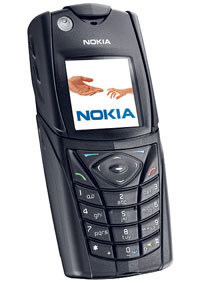 Sweatband-toting sporty types will be pleased to learn that Nokia has introduced a new handset for active-minded consumers, the Nokia 5140i camera phone.
Sweatband-toting sporty types will be pleased to learn that Nokia has introduced a new handset for active-minded consumers, the Nokia 5140i camera phone.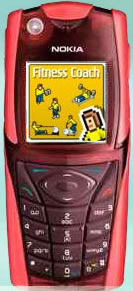 Water-bottle clutching joggers will appreciate the ‘Fitness Coach’ application, offering an ‘always-on’ personal trainer that (apparently) “encourages users to go the extra mile or finish the last set.”
Water-bottle clutching joggers will appreciate the ‘Fitness Coach’ application, offering an ‘always-on’ personal trainer that (apparently) “encourages users to go the extra mile or finish the last set.”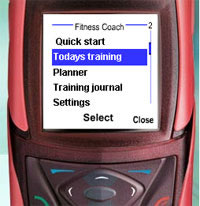 The phone also includes the
The phone also includes the 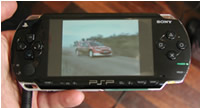 Big sighs of disappointment are heard all around Europe, as Sony officially announce the released date of the handheld gaming/media dream machine, the Sony PSP. It’s going to be 1 September 2005.
Big sighs of disappointment are heard all around Europe, as Sony officially announce the released date of the handheld gaming/media dream machine, the Sony PSP. It’s going to be 1 September 2005. Sony have announced the PlayStation Portable Value Pack at €249 (£179/US$323), which includes headphones, a 32Mb Memory Stick Duo, power supply, protective pouch, etc. The hit film Spider-Man 2 will be available on a UMD disc, free to early purchasers of PSP when they register on YourPSP.com.
Sony have announced the PlayStation Portable Value Pack at €249 (£179/US$323), which includes headphones, a 32Mb Memory Stick Duo, power supply, protective pouch, etc. The hit film Spider-Man 2 will be available on a UMD disc, free to early purchasers of PSP when they register on YourPSP.com.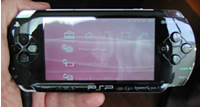 There are many tales of PSP-owners modifying their pride and joy to browser the Internet via Wi-Fi, or indeed run Instant Messaging client software.
There are many tales of PSP-owners modifying their pride and joy to browser the Internet via Wi-Fi, or indeed run Instant Messaging client software.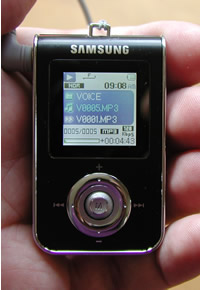 Samsung have made their intentions clear. They want to be the number one in portable music players.
Samsung have made their intentions clear. They want to be the number one in portable music players.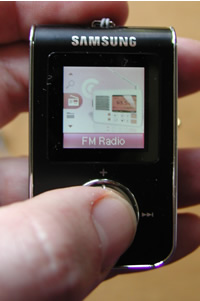 The potential of the 65k colour screen is well demonstrated by the graphically-rich menuing, but when you try to display photos and text files on it, its limitations are highlighted – it’s just too small, and when loading images, slow.
The potential of the 65k colour screen is well demonstrated by the graphically-rich menuing, but when you try to display photos and text files on it, its limitations are highlighted – it’s just too small, and when loading images, slow.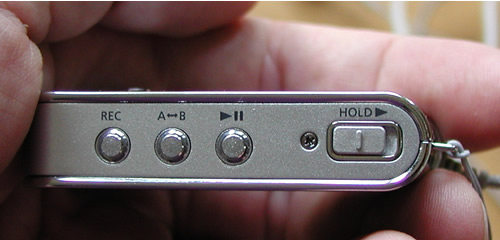
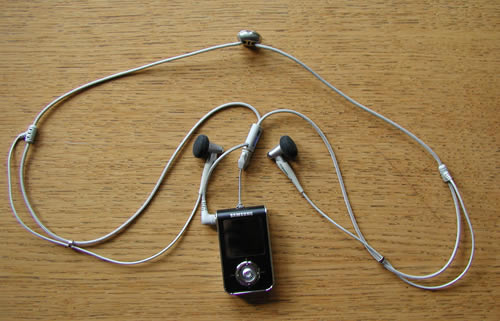
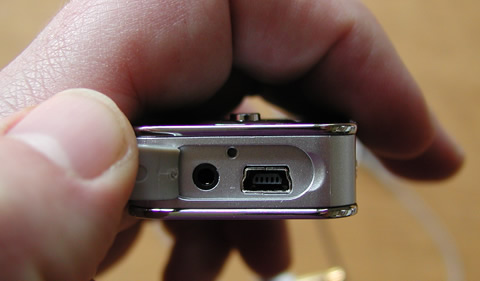
 After years of throwing pans at each other, Sony and Toshiba are set to kiss and make up and develop a universal standard for next-generation DVDs, according to a report in the Nihon Keizai Shimbun business daily.
After years of throwing pans at each other, Sony and Toshiba are set to kiss and make up and develop a universal standard for next-generation DVDs, according to a report in the Nihon Keizai Shimbun business daily. Two competing formats developed out of this technology, with Sony and Matsushita (Panasonic), introducing the Blu-ray standard in February 2002, with Toshiba and NEC Corp. following with the HD DVD standard.
Two competing formats developed out of this technology, with Sony and Matsushita (Panasonic), introducing the Blu-ray standard in February 2002, with Toshiba and NEC Corp. following with the HD DVD standard.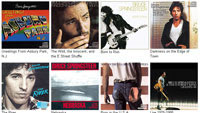 US Record industry honchos will be taking a bigger interest than unusual in the new Springsteen release as they wait to see how the new DualDisc format goes down with Brooooooce fans.
US Record industry honchos will be taking a bigger interest than unusual in the new Springsteen release as they wait to see how the new DualDisc format goes down with Brooooooce fans.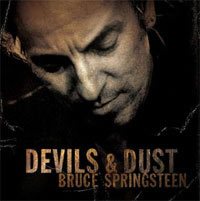 The music business is hoping that the new format – and the extra cash – will help recoup the slice of the retail market lost to piracy and illegal file-sharing. “It’s harder to file-share DVD content and it’s virtually impossible for anyone to burn a DualDisc at home,” purred Thomas Hesse, president of global digital business for Sony BMG.
The music business is hoping that the new format – and the extra cash – will help recoup the slice of the retail market lost to piracy and illegal file-sharing. “It’s harder to file-share DVD content and it’s virtually impossible for anyone to burn a DualDisc at home,” purred Thomas Hesse, president of global digital business for Sony BMG.